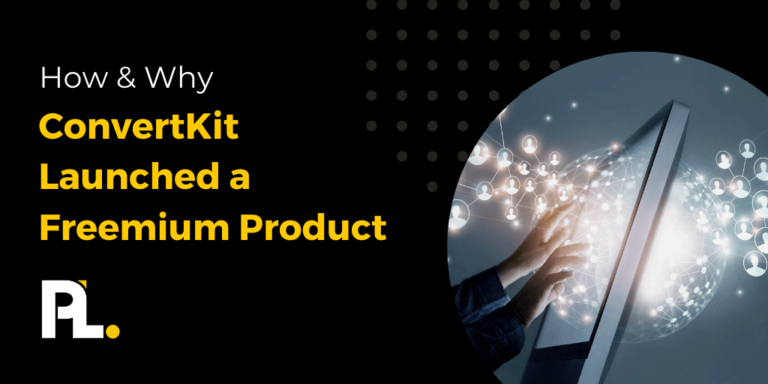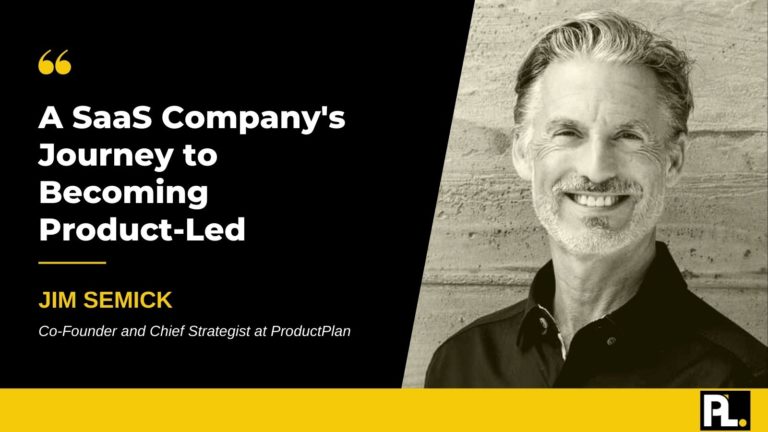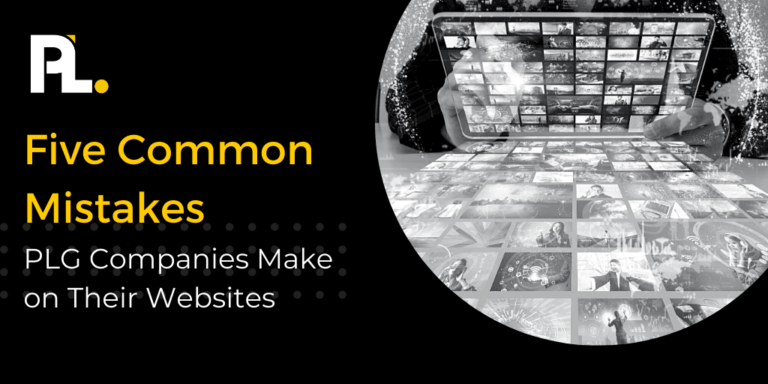Many companies underperform or lose out on business because they don’t integrate effective customer retention strategies into their business model to increase retention.
A retention marketing strategy focuses on existing customers and keeping them connected to the business. It is also an effective way to target customers who have done business with your company before. You may use retention marketing strategies to alert those customers and encourage them to sign-up for your new product, for example.
Many product-led businesses face a significant problem - the risk of customers growing tired of relentless marketing emails. When customers are fed up with irrelevant marketing messages, they either quit or forget why they are with you in the first place. To prevent this from happening while improving your customer experience and managing to increase your retention, you need to use retention marketing strategies.
Watch the video below to discover five marketing experiments that will help increase your customer retention without breaking the bank. Or, keep reading to find out how you can try the five marketing experiments and witness an increase in your customer retention rates!
1. Segment your customer base to increase your retention
At the top of the lead funnel, segmenting potential customers is so important. However, once a customer converts or subscribes, segmentation often gets lost. Instead of segmenting users, everyone is grouped into one big category – customers.
Breaking customers down into segmented groups will help you to increase your retention, and more specifically get better results from your retention marketing efforts. To help segment users properly, ask questions to help you determine your customer's categories and usage.
Ask yourself if different user types use the product differently? Are admins using the product in a different way than account holders or limited users? Research how your product is being used and by whom. If a customer doesn't match up to a user type, it can provide an insight into how your product is being used and adapt it for better retention.
Next, consider how various pricing plans affect customer usage and periodically assess the performance of each plan.
You can segment users in a range of different ways, but here are a few that you might find useful when segmenting your customer base:
- Onboarding customers – you can segment by plan, by those who subscribed in the last 30 days, or even by activity and feedback
- Close to renewal – users are approaching renewal in 30/60/90 days
- New users – people who logged in for the first time
- Offboarding customers – people who are inactive or in the process of canceling
- Top users – your “crème de la user crème,” or those who spend the most time engaging with your product
By focusing your marketing on each segment, you’ll discover that users resonate with it much more than if you were to use the same marketing strategy for every customer.
The image below shows a fairly basic example of how you can segment customers. Of course, once you have put customers into a certain bucket, they will then fit into subsets of those buckets. Nonetheless, it’s a useful visual to refer to if you are in the beginning stages of segmenting customers.
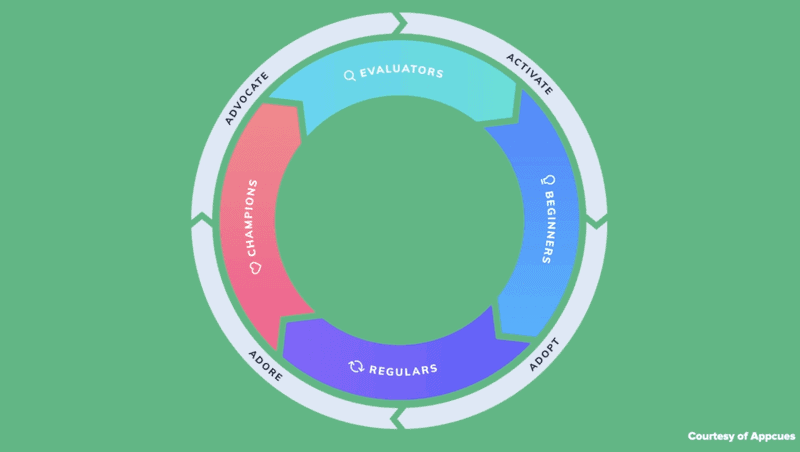
2. Increase your retention by delivering relevant emails
Email is an excellent place to start focusing your marketing messages based on different segmentation groups. You probably already have an email list of active customers, and you have emails going out regularly. It might be newsletters, transactional emails, onboarding, or promotional emails. These are all great places to trial your data and segmentation strategies.
Here are some ideas that can really help you as you build up your retention strategy:
- Every point of contact is a chance to educate, engage, or upsell
- There's lots of information on email onboarding – do some research
- Create templates for faster iteration and turnaround
- Lean on dynamic content
- Rely on analytics to help you understand what resonates
These aren't rules or guidelines, but they are best practices that have been found to work well for customer retention.
Here is an example of newsletter emails from a few companies who have really leveraged the power of segmentation when communicating with users via email:
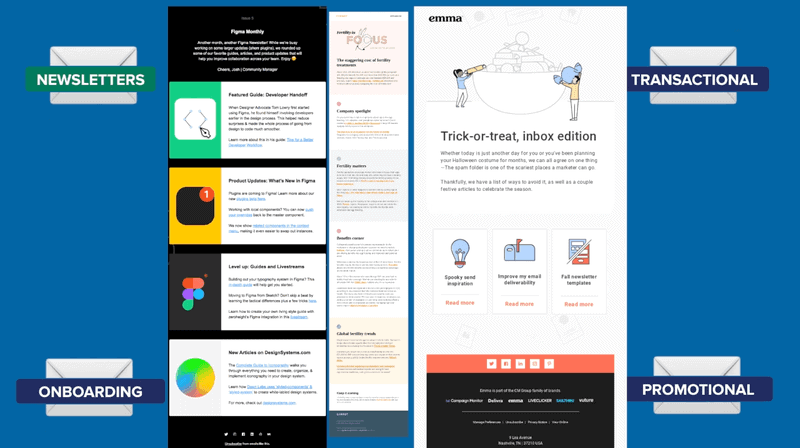
The marketing email from Emma on the right is clean and easy to navigate. It's engaging because of its simple format and relevant information. The one on the left from Figma is bold, colorful, and very user-friendly. Both examples are engaging, interesting, easy to read, and relevant to the target customer.
Transactional emails are a great way to throw in some extra content to engage, entertain, or educate. Typically, transactional emails don't contain upsells, but referrals are fine.

Here are some examples of fantastic promotional emails from Litmus, Dropbox, and Basecamp:

These promotional emails both demonstrate some of the advantages of promotional copy and different ways it can be used. Most businesses send promotional emails to prospects and various segmented customer groups. But, have you ever considered repurposing your promotional emails?
You can take some elements of your original email and repurpose it into different emails or newsletters for other segmented customers. However, I suggest that you change up the copy so that everyone receives email content that is relevant to them. For example, existing customers do not want to receive emails promoting a product they have already purchased. When repurposing promotional emails to send to existing customers, consider the copy within the email and make sure that it is not too salesy, or irrelevant to an existing customer.
3. Create a range of engaging content
If you don’t mind putting the work in, you can expand your retention marketing strategy to include various forms of content from videos to guides, blogs, and many more. Here are some examples of different types of content that both existing users and prospects might like to engage with:
- Short how-to videos with plain language
- Blogs about your product, tips and tricks, how-to blogs, and so on
- Packaged guides on overarching topics
- Regular live or recorded trainings
- Rely on analytics to help you understand what resonates
Providing multiple forms of content that demonstrates the value of your product is a great way to increase retention. It not only gives users additional methods to engage with your business, but it also provides useful information that users can refer to.
Webinars and training videos are excellent ways to increase retention without having to break the bank. At JazzHR, they set up something called “Deep Dive Webinars,” where they released a new webinar related to our product each month. Their webinars help educate both new and existing customers, which has helped them to maintain relationships with their customers.
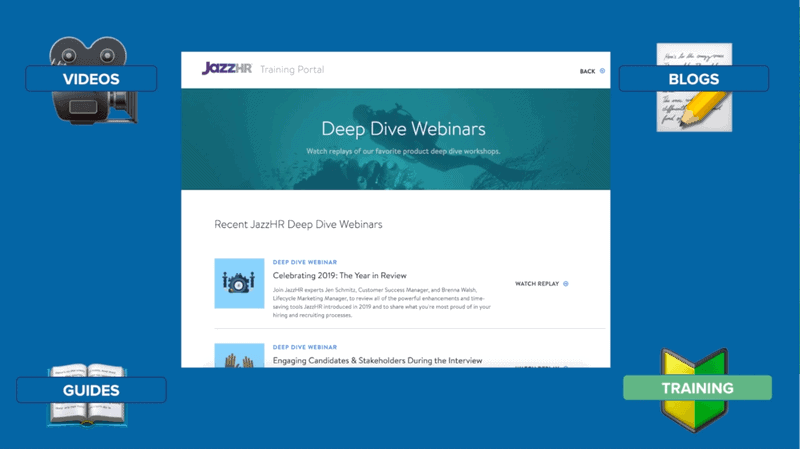
If you can inject personality into your content, do so! Remember that humans like to engage with other humans. Don’t be afraid to inject some personality into your content as long as it is aligned with your brand and brand values, etc.
4. Onboarding
It might seem like onboarding and customer retention are a million miles away, but they’re not. In fact, a strong linking strategy between them can really help strengthen the bonds of your customer relationships. It’s a bit like a first impression. You’ve done your marketing and snagged a customer, perhaps they’re interested in your product, but now you have to make them interested in your company.
Customers who experience a positive onboarding process report more positive feedback and stay with the company for longer periods of time. They’re also more likely to recommend the company to others. The two top reasons why you lose customers is because they don’t understand your product, or they don’t obtain any value from it. You can solve both of these issues during your onboarding process.
When you onboard a customer it’s an excellent opportunity to drive home the message that your company is right for them and they’ve made the right decision to invest in you.
Build value into your onboarding by continuing to promote the benefits of your product and deliver on your marketing promises. In this way, you can build a seamless unity between your customer's first and last interactions with your brand.
5. Leverage in-app messaging
You've done the hard work and successfully onboarded customers for your product; well done! But your efforts can't stop there. If you don’t make an effort with existing customers, they might stop engaging with your product altogether. This could then lead to customers opting out of your product and searching for an alternative. That's why customer engagement and retention strategies are so important – they turn existing customers into loyal users.
You can use analytics tools to monitor your segmented groups and find out when and how they're engaging with your product. Communicate with your customers at the best and most appropriate times for them. Don't be afraid to show off your product every so often and re-engage interest. Email updates and promotional materials are a great way of doing this and of getting customers to click-through.
Milestones are a wonderful way of reminding users how long they've been with the product and what value they've received. Milestones could be anything from yearly anniversaries to birthdays and so on. You can send users a congratulations notice, which is a warm and motivating way to celebrate milestones and achievements.

An in-app message with an offer to contact a friendly customer service agent is reassuring and non-invasive. You can also use in-app messaging to remind users to try different features. Here is a great example of in-app messaging from Appcues:
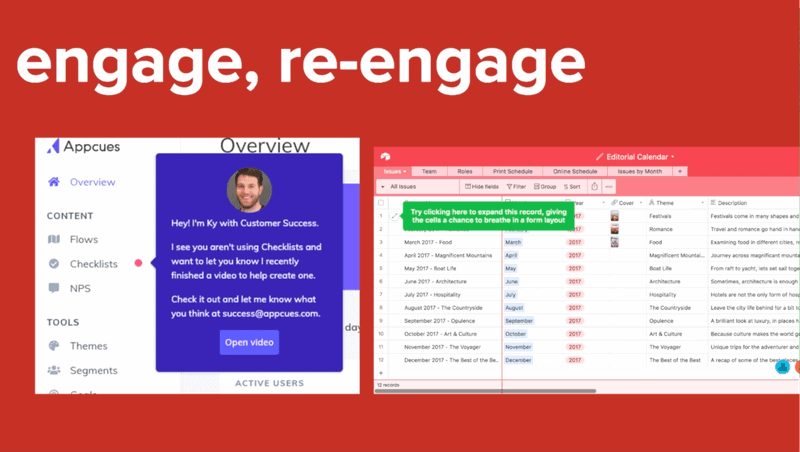
This messaging strategy tells the user that although they don’t have to contact Ky if they don’t want to, he's there if they need his assistance.
The image on the right shows how Airtable re-engages users with tool tips. If you notice that a user’s usage is declining, you can use pop-up in-app messages like this to grab their attention and alert them to different features they haven’t used yet. This is a great way to encourage interaction between the user and your product. It’s also an effective tactic to use to help increase retention.
Retention marketing strategies that improve customer engagement do not need to be expensive or complicated. Breaking up customers into smaller groups is really valuable when it comes to creating a great retention marketing program. Another key to success is consistency across the customer journey, ensuring that the product is serving the customer in the way they expect.
Finally, strengthen the bonds of your customer relationships by reminding them at appropriate intervals of why they have service with you.
I hope that this post inspires you to try some of these retention marketing experiments yourself to try and engage (and re-engage) with existing users to keep retention rates at an all-time high!




